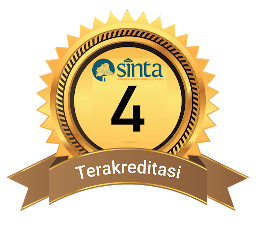Analysis of the Effectiveness of Chemistry Learning During the Implementation of Online Learning in Public High Schools in Sumbawa District
DOI:
10.29303/cep.v7i1.4877Published:
2024-05-31Issue:
Vol. 7 No. 1 (2024): Edisi Mei 2024Keywords:
effectiveness, online learning, questionnaireArticles
Downloads
How to Cite
Abstract
This study aims to analyze the effectiveness of chemistry learning during the implementation of online learning at State High Schools in Sumbawa district (SMAN 1 Sumbawa, SMAN 2 Sumbawa, and SMAN 3 Sumbawa). This type of research is descriptive with an ex post facto quantitative approach. Sampling technique with the formula of Isaac and Michael with an error rate of 5%, obtained 210 samples. Data collection on the effectiveness of online learning using a closed questionnaire with a Likert scale consisting of 36 statements. Data analysis techniques using descriptive statistical analysis techniques by calculating percentages, results were obtained: indicators of managing the implementation of learning by 72%, communicative processes by 65%, student responses by 52%, learning activities by 68%, and learning outcomes by 70%. The results showed that the effectiveness of chemistry learning during the implementation of online learning with these 5 indicators falls into the effective category with an average of 65%.
References
Arifin, H. N. (2020). Respon siswa terhadap pembelajaran dalam jaringan masa pandemi Covid-19 di madrasah Aliyah Al-Amin Tabanan. Widya Balina, 5(1), 1-12.
Gilang, K. R. (2010). Pelaksanaan Pembelajaran Daring di Era Covid-19. Jawa Tengah: Lutfi Gilang.
Farid, A. S. (2022). Mengungkap Komunikasi Pembelajaran Daring di SMAN 3 Panyabungan. KOMUNIKA, 5(1), 49-60.
Pohan, A. E. (2020). Konsep Pembelajaran Daring Berbasis Pendekatan Ilmiah. Jawa
Tengah: CV. Sarnu Untung.
Priyadi, H., Suparman, T., dan Prawiyogi, A. G. (2020). Efektivitas Pembelajaran Daring pada Siswa SDN Purwajaya II. Indonesian Journal of Primary School Education, 1(1), 59-68.
Purwanto, N. 2013. Prinsip-prinsip dan Teknik Evaluasi Pengajaran. Bandung: Remaja Rosdakarya.
Rahma, N. A., dan Pujiastuti, H. (2021).
Efektivitas Pembelajaran Daring
Matematika pada Masa Pandemi Covid-19 di Kota Cilegon (The Effectiveness Of Mathematics Online Learning During The Covid-19 Pandemic In Cilegon City). JOHME: Journal of Holistic Mathematics
Education, 5(1), 1-12.
Rohmawati, A. (2015). Efektivitas Pembelajaran. Jurnal Pendidikan Usia Dini, 9(1), 15-32.
Sugiyono. (2018). Metode Penelitian Pendidikan Pendekatan Kuantitatif, Kualitatif, dan R&D. Bandung: Alfabeta.
Widiyono, A. (2020). Efektifitas Perkuliahan Daring (Online) pada Mahasiswa PGSD di Saat Pandemi Covid 19. Jurnal Pendidikan, 8(2), 169-177.
Author Biographies
Fitri Juliantari Juliantari, Universitas Mataram
Agus Abhi Purwoko, Program Studi Pendidikan Kimia, Universitas Mataram. Mataram, Indonesia
Eka Junaidi, Program Studi Pendidikan Kimia, Universitas Mataram. Mataram, Indonesia
License
Copyright (c) 2024 Fitri Juliantari Juliantari, Agus Abhi Purwoko, Eka Junaidi

This work is licensed under a Creative Commons Attribution-ShareAlike 4.0 International License.
Authors who publish with Chemistry Education Practice agree to the following terms:
- Authors retain copyright and grant the journal right of first publication with the work simultaneously licensed under a Creative Commons Attribution License 4.0 International License (CC-BY-SA License). This license allows authors to use all articles, data sets, graphics, and appendices in data mining applications, search engines, web sites, blogs, and other platforms by providing an appropriate reference. The journal allows the author(s) to hold the copyright without restrictions and will retain publishing rights without restrictions.
- Authors are able to enter into separate, additional contractual arrangements for the non-exclusive distribution of the journal's published version of the work (e.g., post it to an institutional repository or publish it in a book), with an acknowledgement of its initial publication in Chemistry Education Practice.
- Authors are permitted and encouraged to post their work online (e.g., in institutional repositories or on their website) prior to and during the submission process, as it can lead to productive exchanges, as well as earlier and greater citation of published work (See The Effect of Open Access).






